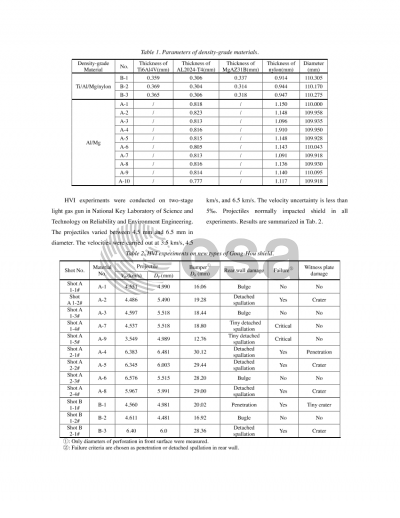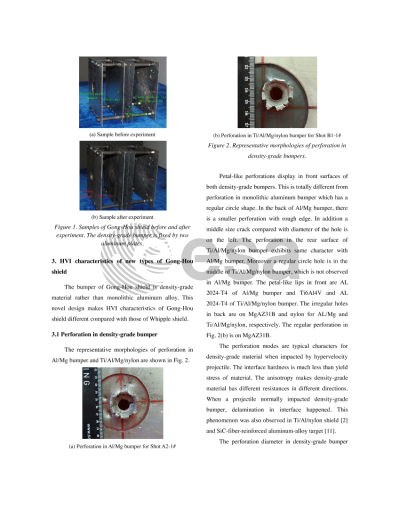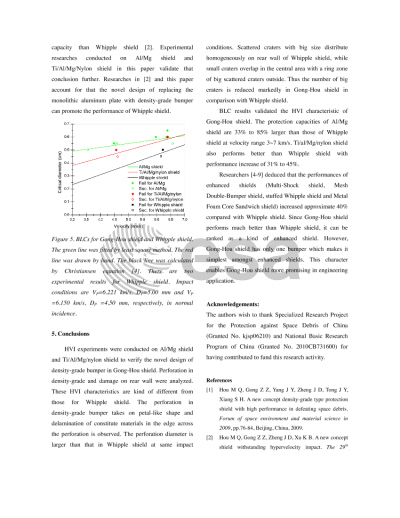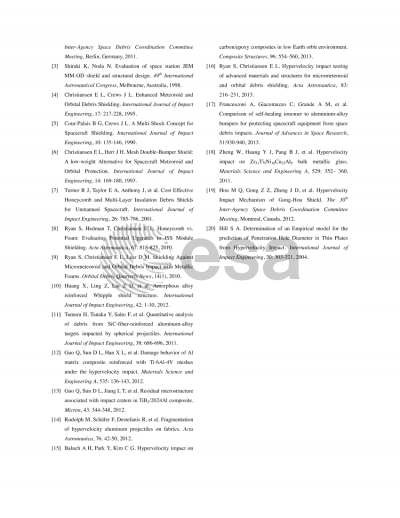Document details

Abstract
Two new types of Gong-Hou shield, Al/Mg shield and Ti/Al/Mg/nylon shield, were studied by using two-stage light gas gun, to verify Gong-Hou shield had larger protection capacity than Whipple shield in defeating micro-meteoroid and orbital debris (MM/OD). Three impact velocities (3.5 km/s, 4.5 km/s, and 6.5 km/s) were chosen for Al/Mg shield. For Ti/Al/Mg/nylon shield, experiments were conducted at 4.5 km/s and 6.5 km/s. Petal-like perforations presented in both Al/Mg bumper and Ti/Al/Mg/nylon bumper. The normalized perforation diameters for Al/Mg shield and Ti/Al/Mg/nylon shield were approximately 1.3 to 2.1 times of those for Whipple shield. There were only 20-25 caters with diameter larger than 2 mm in Gong-Hou shield at 4.5 km/s, while more than 60 presented in Whipple shield. The critical diameters of aluminum spherical projectiles for Al/Mg shield were 5.0 mm, 5.5 mm, and 6.0 mm at impact velocities of 3.5 km/s, 4.5 km/s, and 6.5 km/s, respectively. Those for Ti/Al/Mg/nylon shield were 4.8 mm at 4.5 km/s and 5.9 mm at 6.5 km/s. However, the maximum diameters of projectiles that Whipple shield could defeat were only 2.7 mm, 3.3 mm and 4.5 mm at 3.5 km/s, 4.5 km/s and 6.5 km/s, respectively. The maximum performance increase was 85.2%, and the minimum was 31.1%.
Preview









